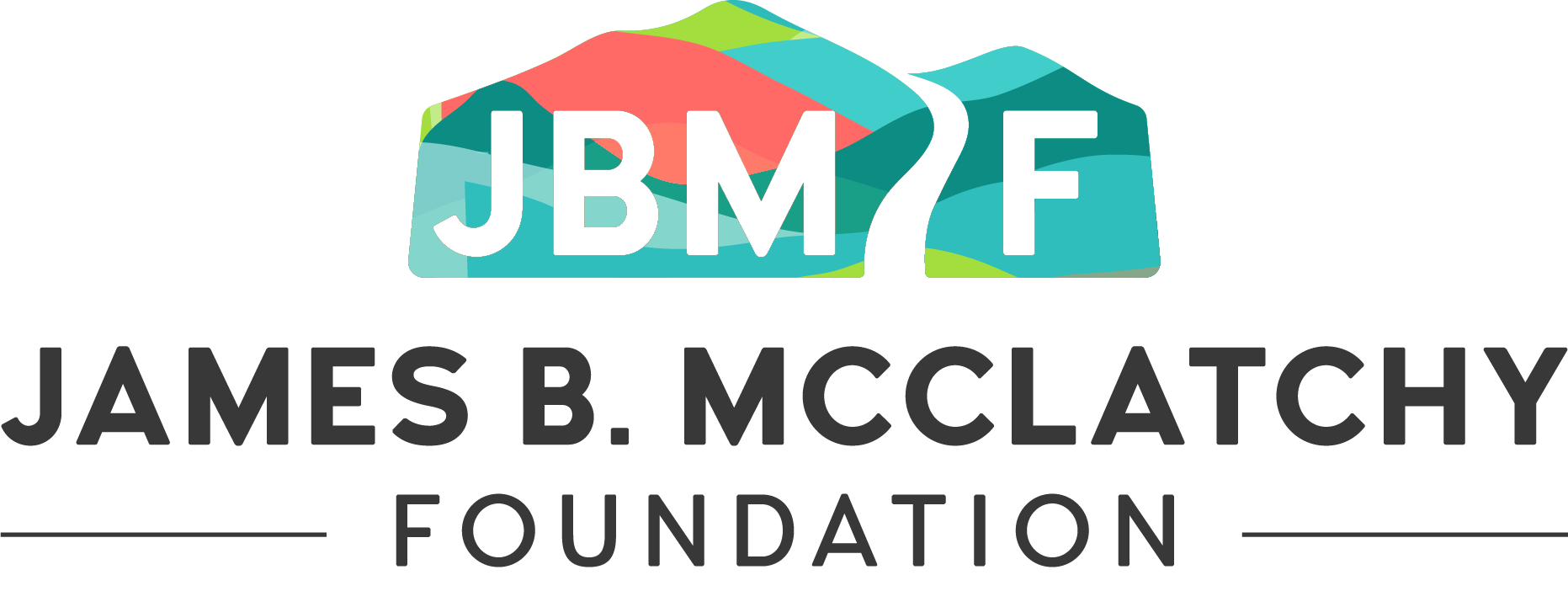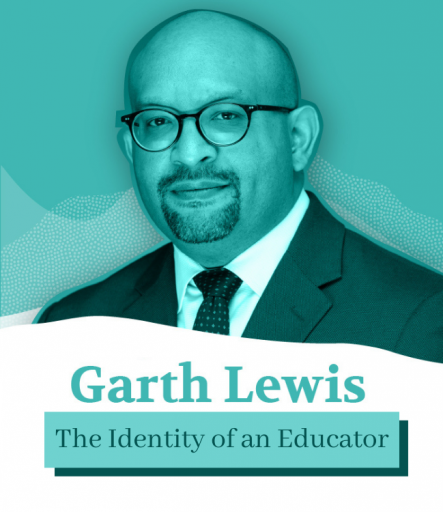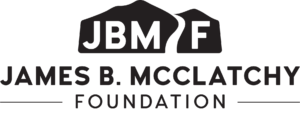County Superintendent
Yolo County Office of Education
When language becomes viewed as an asset in our communities, that will only facilitate a greater benefit to the individual, as well as to the community in which they live, work, play, and eventually will raise children for themselves. It becomes a community benefit for all of us. This will allow us to connect and appreciate one another more, by simply growing into a society in which language serves as a facilitator and a bridge for connection and communication.
The Identity of an Educator
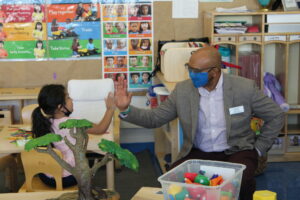 I identify as an educator. It’s less about the title and more about the work and the purpose.
I identify as an educator. It’s less about the title and more about the work and the purpose.
I give homage to my grandparents Jane and Benjamin Clark, Herman and Joyce Lewis, and my mom and dad, Garth Senior and Joan Lewis. I would also like to acknowledge my adoptive mother- Lorraine Johnson, my aunt who opened her home to me as a 15-year-old runaway. What was supposed to be a summer of me cooling off turned into five years of her making space for me under her roof with her own children and making personal sacrifices, which allowed me to thrive as a young person. I have so much gratitude and have to give her credit for all that she has done and continues to do for me.
When I was 17, I participated in a program at my high school called “Winning the School Game.” The program was taught by Dr. Afriye Quamina, an African-American community educator from Oakland, CA.
Dr. Q would gather young people that experienced trauma. He taught us about how the education system really works, how credits were accumulated, and what we needed to do to be eligible to attend college. He would travel down from Oakland to Merced to teach this course and sometimes invite those of us in Merced to join other young people in Oakland. I didn’t know it at the time, but these were restorative circles. I just knew that I felt better after sharing my story with people who had similar lived experiences and cared about what I had to say.
During my senior year of high school, Dr. Q and one of my church members, Wanda Williams, arranged a visit to Morris Brown College, a Historically Black College and University (HBCU). As a native Californian, I remember walking around with my baseball cap on and people asking me to remove it – a big change in culture for me. But that culture and the spirit of the campus solidified that college was a possibility for me, and something I had to do.
That was the beginning of my journey- beginning to understand that there’s power in doing education in a way that’s responsive to those that we intend to serve.
Dr. Q passed away one year ago. Rest in peace to Dr. Q.
Leading and Being Seen
When I was younger, I remember tutoring my cousin – one of my aunt Lorraine’s daughters, who was a second-grader at the time. I could see the transition in her when she began to light up as her understanding became clearer. I also taught Sunday School to little kids at church. Those early experiences were the roots that shaped my identity as an educator.
I became a substitute teacher for Sacramento City Unified School District. One of my first long-term assignments was at a middle school in the neighborhood where I grew up. My father was concerned about the potential for violence and drug use and didn’t allow me to attend that school.
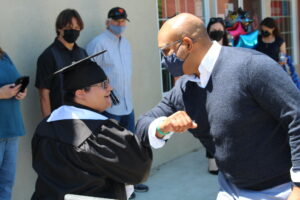 While I was still teaching, my principal at the time saw leadership qualities in me. She took time out to really invest in me and create opportunities to exercise that leadership. After three years of teaching, I moved into the Vice Principal role, and eventually became the Principal. I went from being a substitute teacher, to full-time teacher, Vice Principal and Principal in a nine-year period. I enjoy both the instructional and administrative leadership aspects of the role.
While I was still teaching, my principal at the time saw leadership qualities in me. She took time out to really invest in me and create opportunities to exercise that leadership. After three years of teaching, I moved into the Vice Principal role, and eventually became the Principal. I went from being a substitute teacher, to full-time teacher, Vice Principal and Principal in a nine-year period. I enjoy both the instructional and administrative leadership aspects of the role.
I’ve benefited tremendously from great mentors that have invested their time and energy in me. One of my mentors has been with me since I became a Site Principal over 20 years ago.
It was important that my mentor was an African-American male who had also been an educational leader that understands technical leadership skills, but also what it means to be an African-American man working in education. He cares about the outcomes and the impact I’m having, as well as my humanity and my overall well-being. That’s not something you can train someone to do; it’s more a consequence of a shared experience and unspoken understanding that exists between us.
Proximity, Size, and the Uniqueness of Place
I currently practice in Yolo County, which is a part of the Sacramento Valley, but similar in many ways to the Central Valley. Yolo County is also a mid-sized county. We serve five school districts in the county. It’s a small microcosm of the state of California.
The TK-12 enrollment at 30,000 is right in the middle of smaller and larger counties; for instance, Alpine County has 70 students and Los Angeles County has 1.2 million students. In terms of our student body’s ethnic and socioeconomic makeup, and the population of students with special needs that we serve, it is very diverse. It is also a mix of rural, urban, and suburban areas as well.
We are also a nice size, geographically speaking. I can drive across the whole county in less than forty minutes. What that means for us as leaders is that as a community, we have the ability to really get to know one another. That’s powerful when it comes to collaboration, communication, and alignment of resources and purpose. It allows us to think about things and complex issues that none of us could solve on our own. I’m very proud to serve in this community. I feel like it’s an area in which we can actually make what seems impossible, possible.
The North Star of Collaboration
We recently hosted our first design team meeting for a school site that we are transforming into a full-service community school. We had to move the meeting outside due to COVID protocols. There were 19 members of the team representing students, parents, teachers, classified members, administrators, and community organizations who showed up and bundled up on a Saturday morning to imagine what we could accomplish. I’m incredibly proud of that, and I commend our team for prioritizing that meeting as we live out our mission and vision as an organization.
A Vision for Early Learners
My hope for all of our early learners and dual language learners is that they have quality learning experiences that set the foundation for them to realize their potential, and that enrollment in preschool becomes a way for us to level the playing field. This early investment is the surest way we have as a community to break cycles of poverty to ensure access to meaningful educational experiences throughout students’ entire educational careers. This is particularly important for students who come from low socio-economic backgrounds or whose parents may have education levels that don’t include experiences in higher education.
For our dual language learners, we want to address the equity issue of achievement by ensuring that we honor their home language. For those who are coming from English-only homes, we want to accelerate learning by introducing a new language.
Both of my daughters are bilingual. We personally invested in two years of private preschool education for our own children. That is what I want for every child in Yolo County.
I envision the birthplace of Yolo County as a positive determinant of health for children because we have chosen to intentionally design our work around the needs of young people. We are a long way away from that right now but we are moving in the right direction.
Serving our Children and Parents Through a Different Lens
I don’t think we should ask ourselves if children are ready for preschool. I think we should instead ask ourselves, “What have schools done to become prepared to educate our children? What have we done for parents? How have we demonstrated to parents that we are making the necessary adjustments, creating the conditions, and providing the necessary support for our classrooms to be ready for their children?” That approach presumes that children are ready for learning, whether it’s in a formal or informal setting, and that it is incumbent upon the system to organize ourselves around the needs of our children and families.
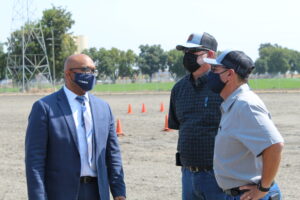 We can then inform our parents about how we are approaching professional learning, our pedagogy in a developmentally appropriate manner, how we’re incorporating play into learning, and how we are consistent and intentional about socializing our children, attending to our children’s needs, and affirming their identities.
We can then inform our parents about how we are approaching professional learning, our pedagogy in a developmentally appropriate manner, how we’re incorporating play into learning, and how we are consistent and intentional about socializing our children, attending to our children’s needs, and affirming their identities.
Research demonstrates that our dual language learners are academically outpacing monolingual children who speak English only. We also know that this generation is the most diverse generation that the United States has ever seen, and that reality will only expand over time.
When language becomes viewed as an asset in our communities, that will only facilitate a greater benefit to the individual, as well as to the community in which they live, work, play, and eventually will raise children for themselves. It becomes a community benefit for all of us.
This will allow us to connect and appreciate one another more, by simply growing into a society in which language serves as a facilitator and a bridge for connection and communication.
It is incumbent upon policymakers, leaders, and the business community to articulate the importance of high-quality early learning and care through messaging and investments. The return on investment is tremendous. It’s demonstrated in terms of reducing school failure and rates of incarceration, particularly amongst children of color and children that come from low socioeconomic backgrounds. This is an all-hands-on-deck mission, so I want to advocate for all members and sectors to take responsibility.
The pandemic has laid bare the need for high-quality care. It’s time for policymakers and those with resources to invest in early care and early learning as a way for us to enable an economy that will work for all as well as ensure that we have addressed our moral imperative of equity for our most vulnerable populations.
Published on the James B. McClatchy Foundation website using the Creative Commons License https://creativecommons.org/licenses/by-nc-nd/4.0/ : Attribution-NonCommercial-NoDerivatives 4.0 International (CC BY-NC-ND 4.0)
